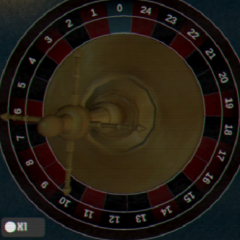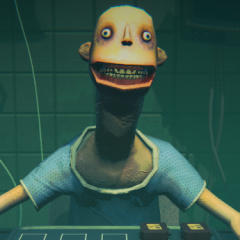Side Effects
Side Effects is a game structured around limited information and escalating pressure. The player is placed in a controlled environment and asked to make repeated decisions that affect a resistance meter. Each round introduces a set of pills, and one must be chosen. The effects are not fully known until after the choice is made, and this uncertainty builds the main tension. The player’s goal is to remain in the game longer than the opposing patient, who is following a similar set of rules.
Side Effects is a game structured around limited information and escalating pressure. The player is placed in a controlled environment and asked to make repeated decisions that affect a resistance meter. Each round introduces a set of pills, and one must be chosen. The effects are not fully known until after the choice is made, and this uncertainty builds the main tension. The player’s goal is to remain in the game longer than the opposing patient, who is following a similar set of rules.
Rounds and Uncertainty
Each turn presents a new scenario. Pills may increase or reduce resistance, apply unknown status effects, or cause immediate consequences. Between rounds, experimental items appear that may offer temporary advantages or influence upcoming outcomes. The other patient is visible and reacts to events, introducing a psychological layer. Over time, patterns can be observed, but outcomes remain unpredictable enough that no strategy guarantees success.
Here are the recurring elements the player must monitor:
· Resistance: a number that must stay above zero
· Pills: chosen blindly, with varying effects each round
· Experimental items: limited-use modifiers between turns
· Opponent behavior: reactionary and adaptive in later stages
· Status effects: temporary changes caused by pills or items
Adversary Dynamics
Side Effects shifts tone as the opponent becomes more active. Early rounds feel isolated, but later turns become interactive. The opponent may block certain pills or compete for items. Some effects change depending on whether the player or the opponent used them first. This introduces a direct layer of confrontation. The player is no longer just surviving, but trying to outlast and outplay a second presence in the room. The tension is constant but silent—there is no timer, but waiting too long can still change outcomes.
System Without Guidance
The game does not explain what each pill does. There is no tutorial. Side Effects relies on experimentation and memory. Each run becomes a form of data collection, where the player learns what to avoid and what to risk. The color of the pills may offer subtle clues, but even this is not guaranteed. As resistance drops, the space begins to shift slightly—lights flicker, or background elements alter. This feedback is visual only and does not confirm right or wrong choices.
Final Condition
Victory is not always clear. Sometimes the opponent collapses first, and the player is declared stable. Other times, both fall in the same round. The game keeps no permanent score and does not mark wins. Instead, it restarts, asking for new decisions from a blank state. Side Effects is not about achieving a final outcome but about seeing how long one can continue in uncertain conditions, while adapting to an opponent who is also trying to do the same.














Comments